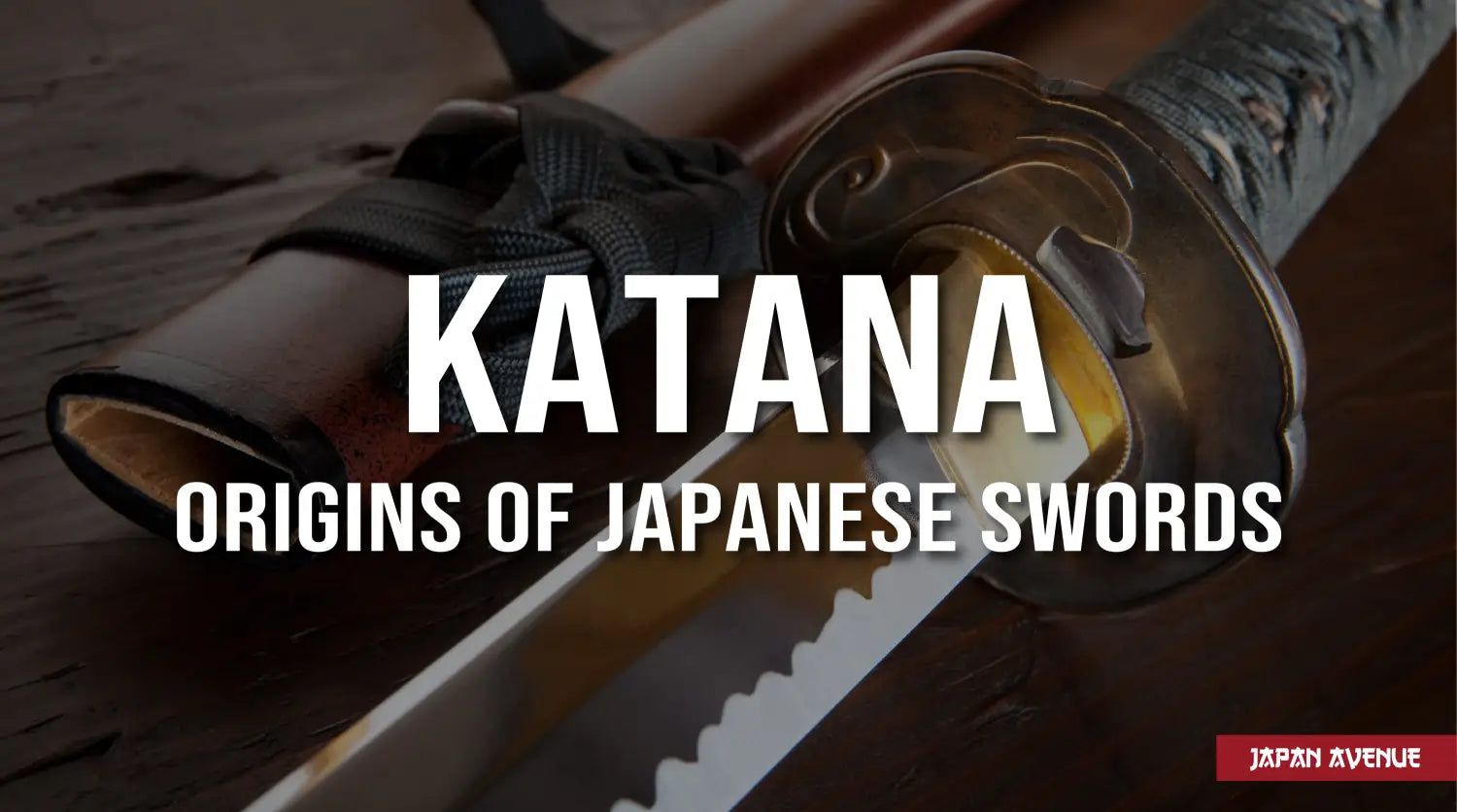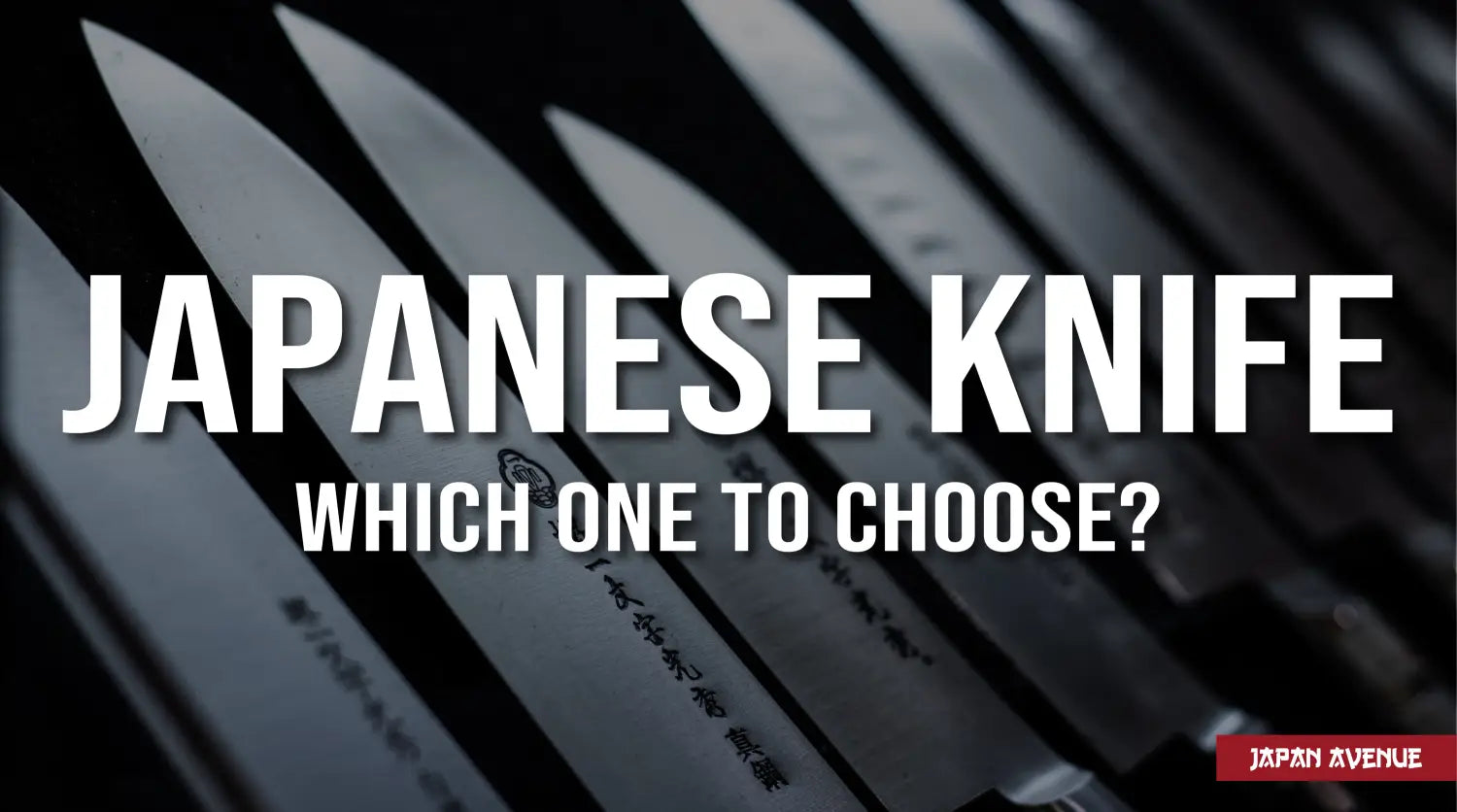The Katana is one of the iconic symbols of Japanese culture. It represents the honor and power of samurais, as well as the skill of artisans and blacksmiths. Katanas are renowned for being the sharpest weapons in history.
Today, you can admire them on-screen in big Hollywood productions, in Japanese animation series, or on the shelves of avid collectors. While Katanas are still used in martial arts, many are now crafted solely as precious decorative objects.
How do we explain such enthusiasm for Japanese swords? Discover the manufacturing rituals of these warrior weapons turned into works of art, their origins, and their journey through the ages to find their place in contemporary popular culture.
Manufacture and Uses of the Japanese Sword

The Preferred Weapon of the Samurai
The Japanese Katana is far different from the European sword used by knights. It is renowned for being the sharpest and most precise weapon in history, thanks to the materials used and the meticulous craftsmanship imbued with spiritual dimensions. The Katana symbolizes the power and honor of samurais. Feel free to read our dedicated article to learn everything about these Japanese warriors.
This two-handed weapon allows for both thrusting with the tip and using its legendary cutting edge immediately after drawing the sword. Samurais wore it in their obi belt, with the edge facing downwards when riding a horse and upwards when on foot. Katanas are part of the nihonto, which refers to the entirety of Japanese swords.
In times of war, the samurai's sword was fearsome. But during peacetime, the Katana was more often worn to solemnly signify their status. Japanese warriors cherished their daisho, which included their Katana and their wakizashi, a shorter sword measuring between 30 and 60 centimeters. The tanto, on the other hand, was an additional dagger for mounted warriors, measuring less than 30 centimeters.
The Katana blade can extend up to 80 centimeters. Its predecessor, the tachi, was more curved and was used until the 13th century when it was deemed too fragile and replaced by the Katana.
Martial Arts, Training Swords, and Accessories
Martial arts hold a significant place in Japanese culture. The term Katana is not exclusive to samurais and actually encompasses various types of swords still used today in combat sports training.
- Bokken : Wooden sword used in kendo (the way of the sword) and aikido training.
- Laïto : Unsharpened Katana made of metal or aluminum for practitioners of iaido (the art of drawing the sword) and iaijutsu (sword cutting techniques).
- Suburito : Heavy wooden sword used for building strength by making cuts in the air.
- Shinai : Bamboo sword, ideal for striking in kendo training without causing injury.
- Shinken : Stands for "real sword". Martial arts experts use them in exams or for striking straw targets.
- Shikomizue : Sword concealed in a cane.
Katanas have their own accessories, which also delight collectors:
- Saya : The sheath that protects the blade from moisture and oxidation.
- Katana kake : An elegant display stand where the sharp-edged sword is placed with the blade facing up, stored in its sheath, and the handle on the left. During wartime, the handle was placed on the right for easier drawing of the sword.
- Shirasaya : A special sheath used to preserve and protect a blade that has not yet been mounted into a Katana.
Katanas in Contemporary Popular Culture

Seven Samurai. Source : lemonde.fr
Japanese Blades in the Spotlights
The legendary Katana blade has inspired numerous artists worldwide. Since the 1960s, we can see samurais drawing their Katanas in famous Japanese films like Akira Kurosawa's "Seven Samurai". Today, these weapons are adored by fans of Japanese manga and anime series. Some watch mesmerizing combat scenes where heroes master the sword perfectly. Whether it's in popular series like One Piece, Bleach, Kenshin with his famous reverse-blade sword, Demon Slayer, or Naruto, Katanas reflect the power, skill, and honor of the warriors.
Quickly, international cinema embraced Japanese swords. For example, Quentin Tarantino expressed his admiration for Katanas on several occasions. In "Pulp Fiction", Bruce Willis fights with this ancient weapon. Later, in "Kill Bill", Tarantino made the Katana a central element of the film's plot. The weapon alone represents Uma Thurman's character's will, her fighting spirit, her need for revenge and justice, and her superiority over her adversaries. We even witness the birth of the Katana when it is forged by Hattori Hanzo.
American comics are also influenced by the allure of Japanese swords, as exemplified by the character "Katana" in the DC Comics universe.
Finally, Japanese swords are often the preferred weapons of video game enthusiasts. It is possible to wield a Katana in most well-known franchises: Fortnite, Elden Ring, Assassin's Creed, Final Fantasy, Mortal Kombat, Metal Gear Solid, and more.
Forging the Katana: An Ancient Art
In addition to being a symbol of power in popular culture, the Katana is elevated to the status of a work of art. These Japanese blades attract collectors, often willing to pay a high price for their own samurai weapon.
Every element that makes up the Katana is a work of craftsmanship. Everything is carefully considered: the length of the tsuka (handle), the shape of the tsuba (guard), the kashira (pommel end), the lacquer-coated saya (sheath), the habaki to secure the sword in its saya, and more. Artisans leave nothing to chance and neglect no step in the manufacturing process. There are nearly thirty terms to name each part of the Japanese sword and its sheath.
Forging the blade of a Katana is a ritual in itself. The raw steel used is called tamahagane. It is melted with iron sand and charcoal in a clay furnace. The steel is then sorted and purified, so the blacksmith has the best parts of tamahagane to work with. The high-carbon steel is reserved for the sword's outer layer, while the more flexible steel is used for the core. Finally, the artisan forges the blade, coats it for better protection, curves it, and polishes it with volcanic stones. Once the handle and sheath are finished, you have a true treasure. Like an artist, the blacksmith engraves his signature into the silk of his masterpiece.

The Katana is thus an inspiring work of art, the result of meticulous craftsmanship, and a reminder of the fierce battles of samurais.
Japan has many other symbols recognized worldwide. Its craftsmanship, beliefs, values, and history have much to teach us. Discover 10 other iconic symbols of Japan to continue exploring this fascinating culture.



